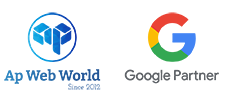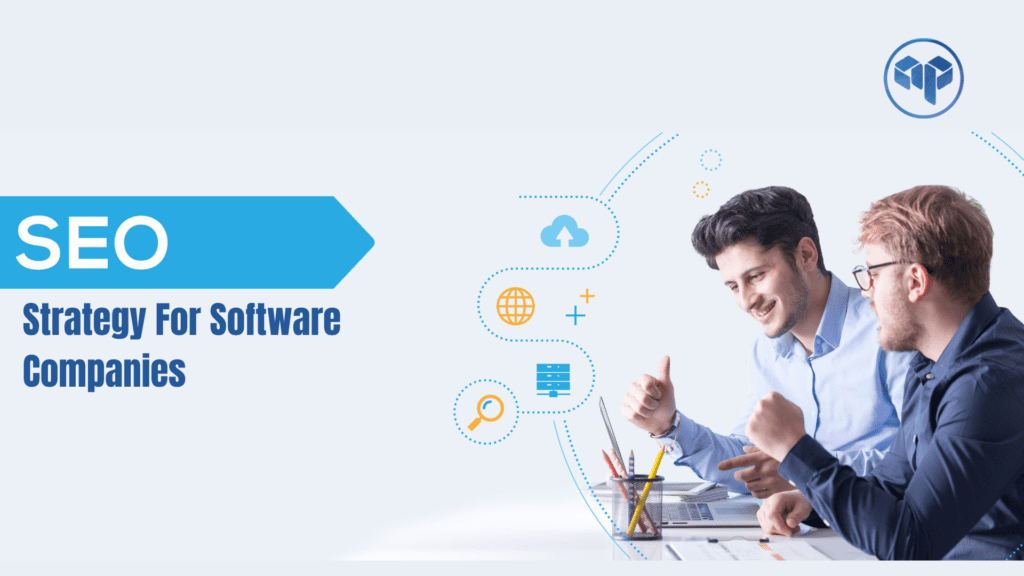Getting higher Google rankings and conversion is a real challenge for software industries. And, following the same old SEO best practices make it even worse.
In this guide, I will share the complete SEO strategy for software companies to help you drive more traffic and qualified leads.
Let’s jump right into this.
Table of Contents
Toggle1. Keyword research
The biggest mistakes software companies make is that they just focus on transactional keywords.
People use transactional keywords with the intent of buying.
An example could be “Buy CRM software.”
So, instead of just considering transactional keywords, you should also target informational long-tail keywords.
It’s because informational long-tail keywords have:
- Less competition
- High conversion
Here are four effective ways to find the right keywords:
1. Google Autocomplete
Google itself is a great source for finding long-tail keywords. Enter the seed keyword in the Google search bar along with keyword modifiers such as how, what, why, where, etc.
An example:

To get even better results with Google autocomplete, add the ‘+’ sign before and after your search terms. That will give you a lot more keyword ideas related to your software services.
Here’s how it works:

2. People Also Ask
You may have already noticed that Google features a people-also-ask box for your queries that shows people’s relevant questions.
This is a goldmine for keyword research and also to write better content.
The best part is that Google will continue to show you more related questions when you click on any section.

Pro tip: Answering these questions in your content will help to match the search intent. It is also a good practice to add relevant questions as sub-headings into your content.
3. Related searches
It is found that a top-ranking page on Google automatically ranks for many other relevant search queries. So, you can drive more traffic by ranking on multiple relevant search queries.
Here’s a breakdown of how many keywords a page can rank for organically (by ahrefs):

To get the advantage, you need to cover the related search queries relevant to your primary keyword.
And, ‘related searches‘ that Google shows at the bottom of the page are great to find those additional topics.

4. Case study: Airtable’s SEO strategy
Airtable, a SaaS company, is a great example that leverages a long-tail strategy to drive thousands of visits every month.
Their primary growth in SEO comes from targeting long-tail keywords such as:
- Study guide template (Traffic = 195 visits/month)
- Event planning template (Traffic = 165 visits/month)

Seems pretty low traffic, right?
Wrong.
In fact, they are ranking for over 4,000 low-hanging keywords like this.
As a result, these long-tail keywords are contributing more than 50,000visits/month.
That is how powerful it is targeting informational long-tail-keywords.
2. Keyphhrase Specific Service Pages
The service page is where people get to know more about your product features and benefits. So ranking service pages higher is a great opportunity to drive tons of qualified traffic & leads. And keyword research is the first step to achieve that.
The goal here is to target keywords with commercial intent and low difficulty (especially if your website authority is low).
First, go to ahrefs and enter as many seed keywords as possible.
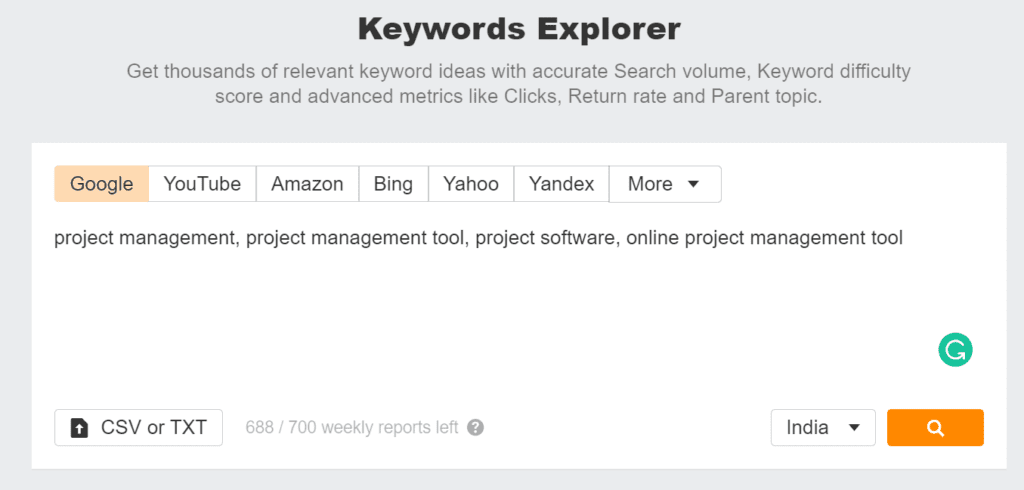
Next, add keyword modifiers like ‘best’, ‘top’, ‘leading’, ‘pricing’, etc.
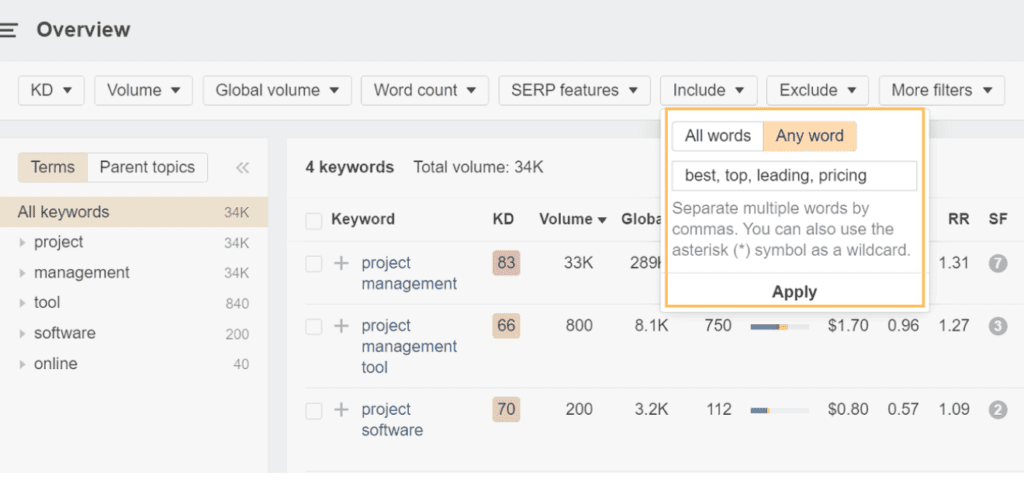
Now, you have dozens of keywords that you can choose from depending on business potential, traffic potential, and competition.

Create multiple service pages:
if your software offers multiple features, it’s not a good practice to put all the services on one page. Instead, create multiple service pages targeting different keywords separately.
One great example is Notion, a productivity software.
On the navigation, you’ll see multiple pages under the ‘Product’ tab, such as:
- Team Wiki
- Project & Tasks
- Notes & Docs
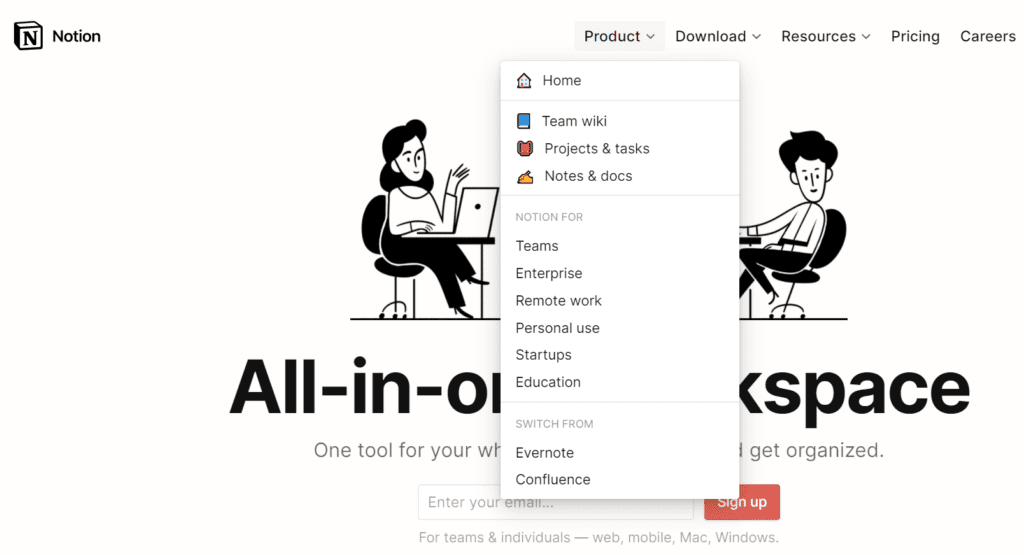
And, each of these commercial pages is driving traffic from various related keywords.
Here’s a breakdown of the ranking keywords from different product pages (a/c to Ahrefs).
Product Page title | Number of keywords ranking for (in the US alone) |
Notion for Wikis | 158 |
Notion for projects & tasks | 48 |
In both cases, the product is the same. Just by adding different context and targeting keywords with different solutions helps Notion to drive extra traffic.
The same method you can apply for your software products as well.
3. Link building
Sometimes creating good content and matching the search intent isn’t enough to secure a top position in Google.,
The link profile of individual pages and websites still matters to beat your competitors.
Here are three ways you can acquire links to get a higher position in Google.
1/ Writing guest articles
Guest articles are great for building domain authority and getting brand exposure from third-party sites. But the question is how to find the right website to contribute an article.
Here’s a step-by-step process.
1/ Find sites that accept guest articles
To get a list of websites in your niche that accepts contributor article, you need to search for:
- “Write for us” [Your niche]
For example, if you offer application software, type in “write for us” application software.
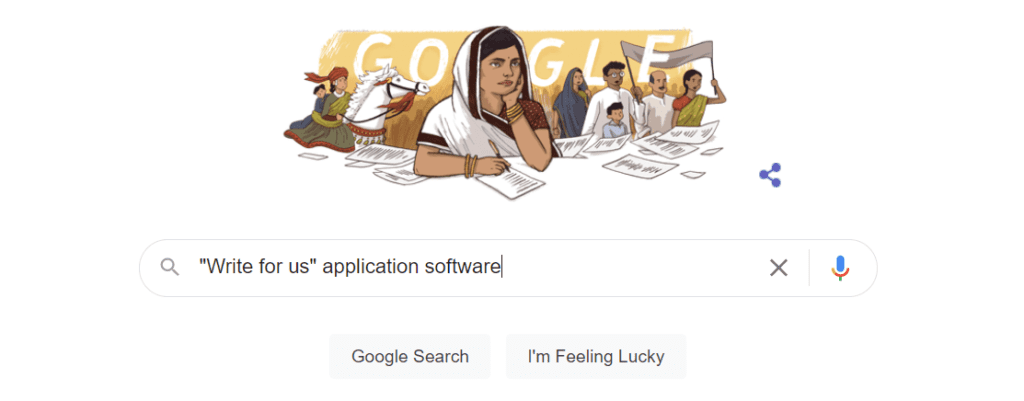
This search will give you all the sites that accept articles related to application software.
Other search terms that can be used are: “contribute an article,” “submit post,” etc.
2/ Validate the site
Not all the sites are good enough to get your article published. Some of them will have spammy content.
A few things to manually check to validate high-quality sites:
- Backlink profile (Do they have links from relevant and highly authoritative sites?)
- Thin content (Avoid sites that regularly publishes thin content)
3/ search for existing articles
Now, before submitting your article topic, make sure you check their existing articles. Pitch article topics that they haven’t covered yet. This way, your chance of getting approved will be high.
2/ Software directories
Listing your software in directory sites helps in getting brand exposure, citations, etc.
While submitting your website in directory sites, remember these points:
- Instead of getting your software company listed in general directories, look for sites that only list software companies.
- It’s even better if the listing site allows you to add location and description to your software company (helpful in local SEO)
- Website quality (link profile, content, ranking keywords, etc.)
Below is an example of GoodFirms listing app development software:

Some of the software directories you can consider are:
3/ Publish research-based article
Creating research-based articles is one of the best ways to get organic links in 2024.
Original research content tends to get more social shares, mentions, links, and traffic, according to the study of Buzzsumo.
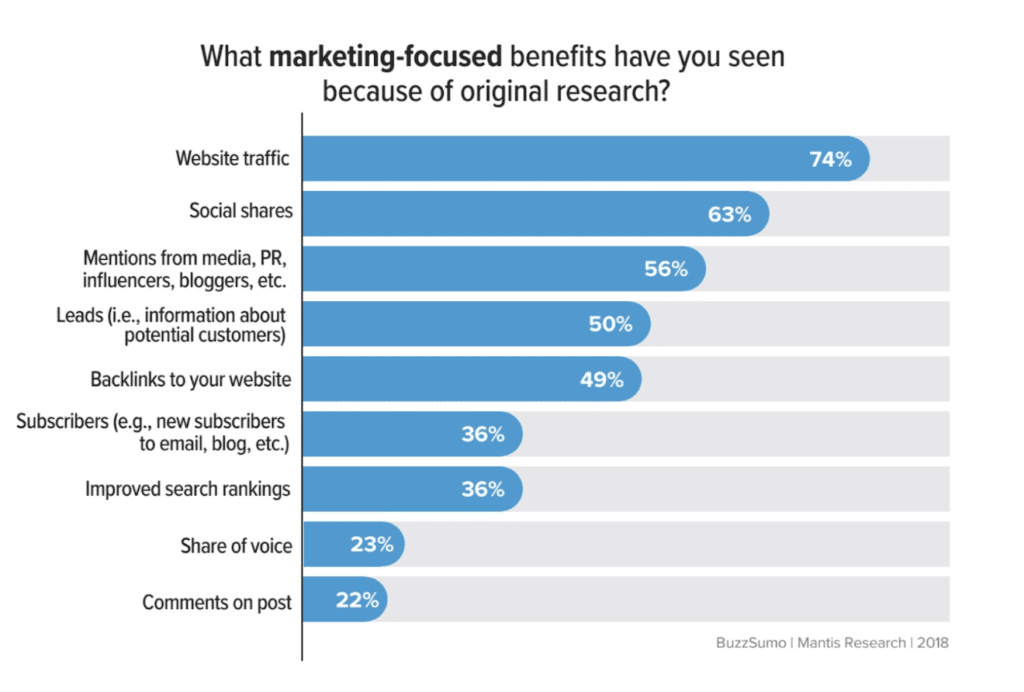
Here’s how to publish your first original research report:
1/ Find the winning topic
Not every topic is a good fit for your research. It has to be something that people in your software industry care about.
So start your research on forums, Quora, Reddit and see what’s one thing that people claim without any solid data.
An example?

In quora, people are asking about the highest paid technology.
But the answers mentioned in the form didn’t have any solid data or research to back the claim.
This might be an opportunity for the software industry to publish original research.
Four elements of a winning research topic:
- Relevant to your software industry
- People are interested to know about
- Not much research is done on the same topic
Also, to get the most out of your research report, ensure to make it ungated and add lots of visuals.
Because ungated research is likely to get more links compared to gated reports.
Turning data into visuals makes your research report more linkable by websites and shareable on social media networks.
4. Content strategy for SaaS
When it comes to the software industry or SaaS companies, you’ll find many competitors and alternatives to every product.
But that can also turn into a content opportunity.
Here’s how.
Brand alternatives
AppSumo, a marketplace for software, is driving thousands of organic traffic from Google with one type of content format.
That is helping users to find brand or product alternatives.
A big part of Appsumo’s organic traffic comes from the content format “brand name] alternatives.”
Abode alternatives, photoshop alternatives are some of them.

So, how can you do the same in your niche?
First, identify the key competitors to your brand or product.
Next, perform basic keyword research to check the search volume of keywords such as “[Your competitor’s product name] alternatives.”
Next, do the same for all of your possible competitors. Now, you’ll have a list of high-intent content ideas.
Here’s an example:

Create content for buyers’ stages
In many cases, the software has some complex features or use cases. So, It’s equally important to educate your users through different buyer stages.
Three buyer stages that your customer goes through are:
- Awareness stage (when people is not aware of your software company or they haven’t about the benefits and feature of your product)
- Consideration stage (People who have already tried or interacted with your software)
- Decision stage (It’s the time to encourage the decision-makers to make the final purchase)
Here’s the breakdown of content strategy for buyers’ stage:
Buyer’s stage | Goal | Content ideas |
Awareness | Product awareness, Engagement | The research report, beginner’s guide, eBook, Guest articles, |
Consideration | Lead generation | Software comparison, software review, Educational content explaining software features, live interaction, etc. |
Decision | Sales | Live demo, customer case studies, etc. |
Product led content
“Product-led content where the product is woven into the narrative to illustrate a point, solve a problem, and/or help accomplish a goal,” according to Dr. Fio Dossetto.
Let me cite an example.
Ahrefs, an SEO software company, is a great example of using this concept. One of their recent blog posts was on the topic of creating a content strategy.
And, instead of mentioning their software or adding CTA for software trial
at the bottom of the article, they choose to make their software a part of the solution.
See the below image.
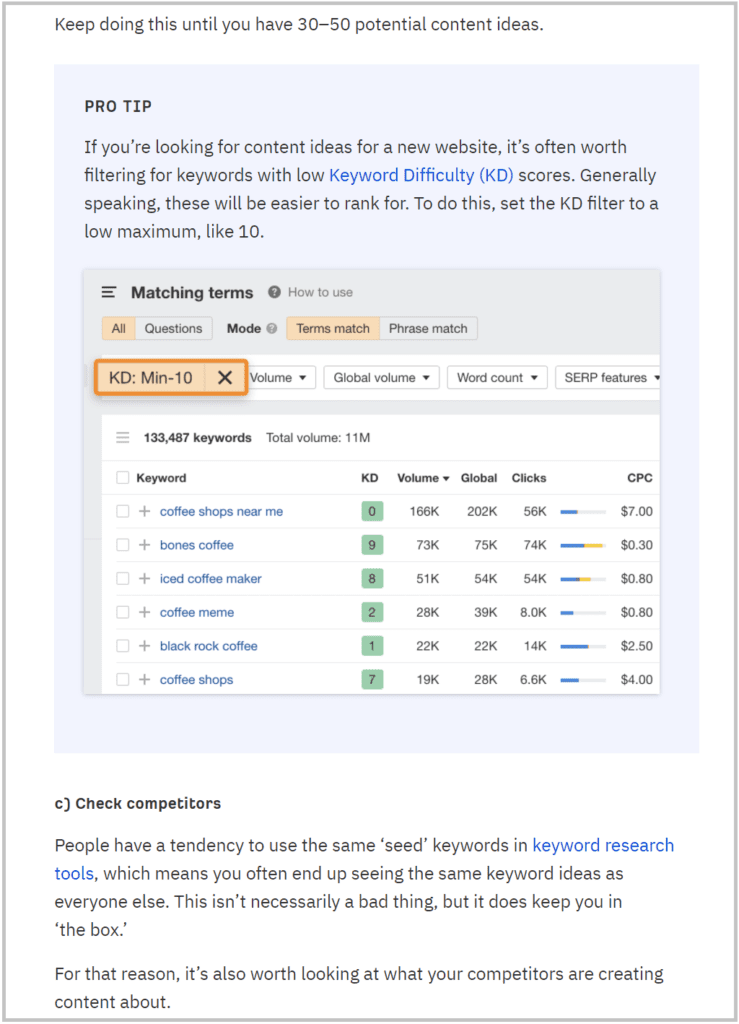
The benefits of adding your software as a part of the content are:
- Customer acquisition
- Lead generation
- Brand awareness
- Competitive advantage
The same concept you can apply to your software company by prioritizing your content topics with the below framework.
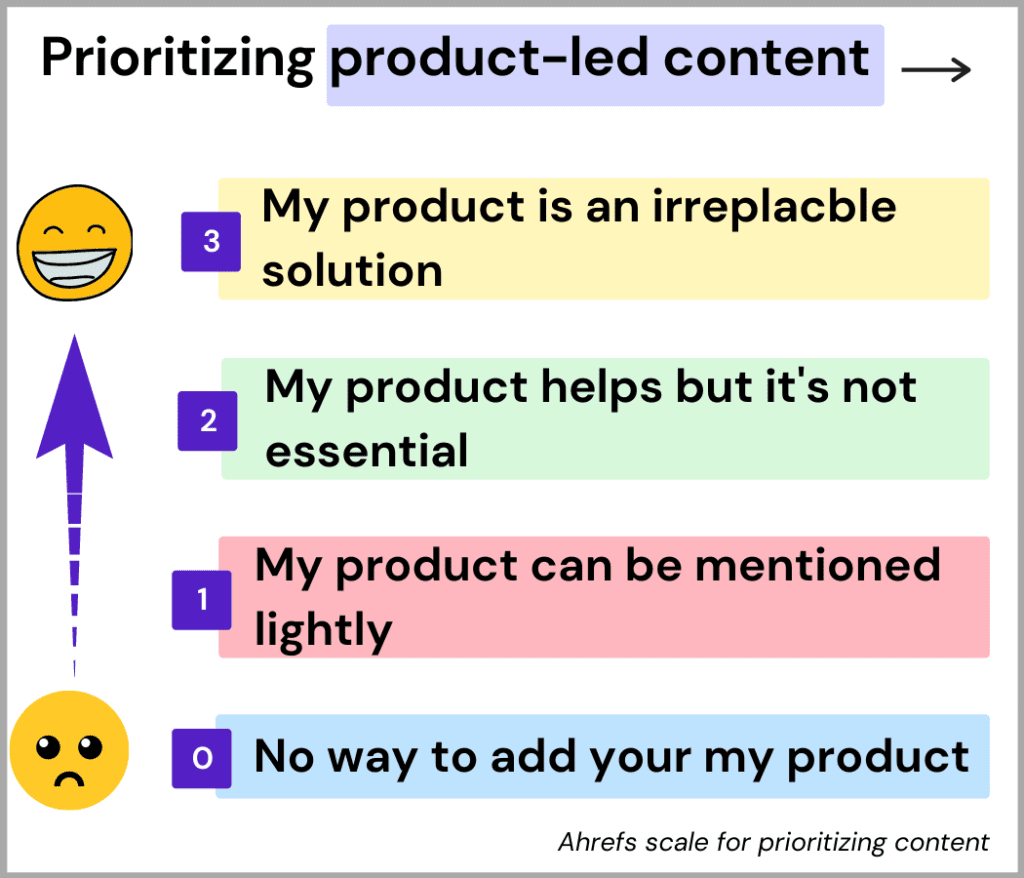
This way, you can easily create content where your software features can be used as content.
5. Conversion Rate Optimization For SaaS Websites
The chances are that the homepage is the most visited page on your website. So conversion optimizing the homepage is a huge win for acquiring leads and customers.
Here are some of the best practices to improve conversion:
Show don’t tell
In many cases, the software comes with features that are complex to explain. So, instead of adding long text, why not just show your software in action.
Example: Notion (an all-in-one productivity software)
Instead of writing how Notion works, they choose to showcase the product in action using GIF.
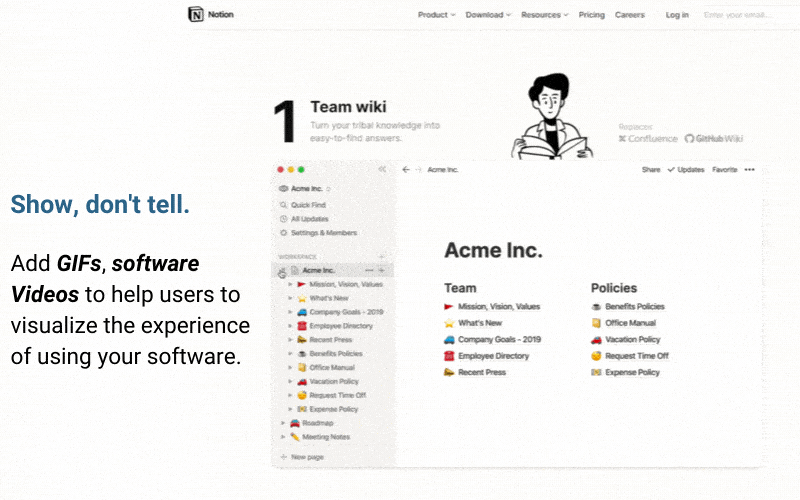
Make your messaging user-specific
One common mistake is not making your landing page copy tailored to the end-users. SaaS websites use the same generic CTAs such as start your trial, Sign Up, Get started, etc.
Here’s a better alternative.
“Be specific about the value users get by clicking forward… And, reassure users they’re on the right path.”- Matt Maiale.
In other words, make your copy as specific to your software feature and benefits as possible.
For example, Zapier turned generic CTAs into highly specific CTAs.
Search → Search for the apps you use
Sign Up → Sign Up now to automate Google sheets
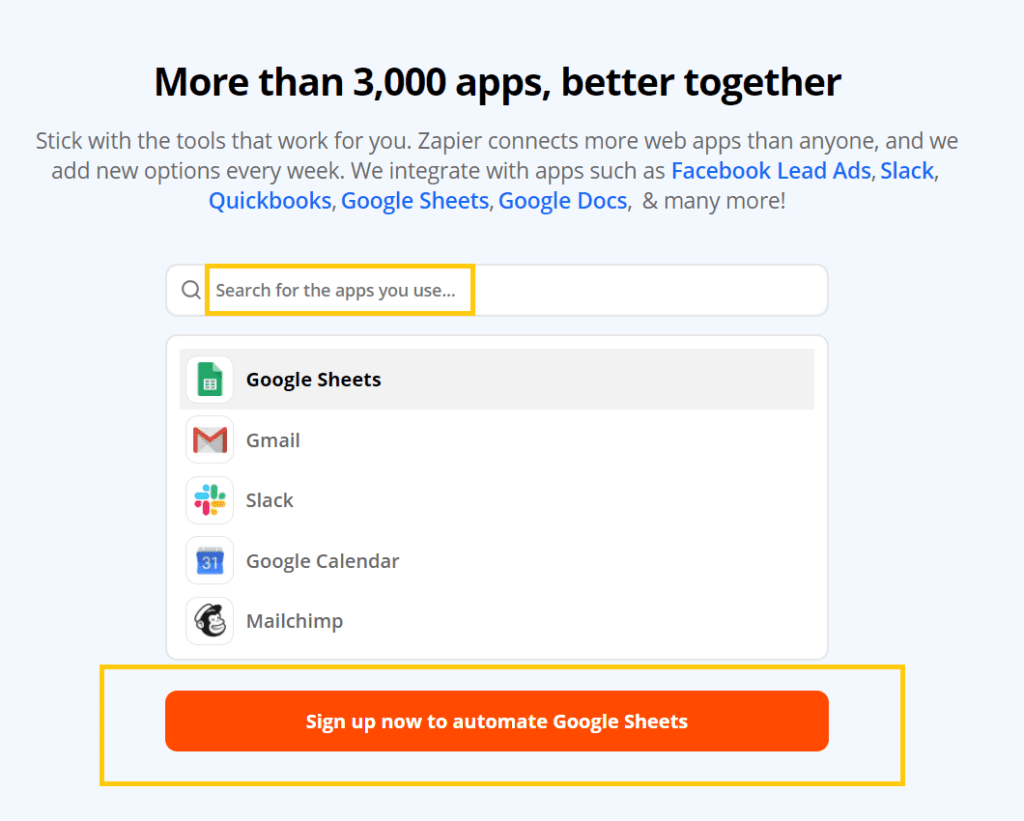
Copywriting formula for landing page
PAS is a popular copywriting formula used mainly for homepage or any kind of landing page.
Here’s what this framework stands for:
- P (Problem)- Start with a problem that your software solves
- An (Agiate)- Now, embed the pain points or challenges your users often tell
- S (Solution)- Then, finally, promise a solution.

Image source: Ahrefs
Conclusion
This was the ultimate guide to building an SEO strategy for the software industry. By now, you’ve got some actionable SEO tactics and strategies to implement.
But if you’re struggling with where to get started, how to implement it in the right way, then contact our team of SEO experts to get higher rankings and more leads.
